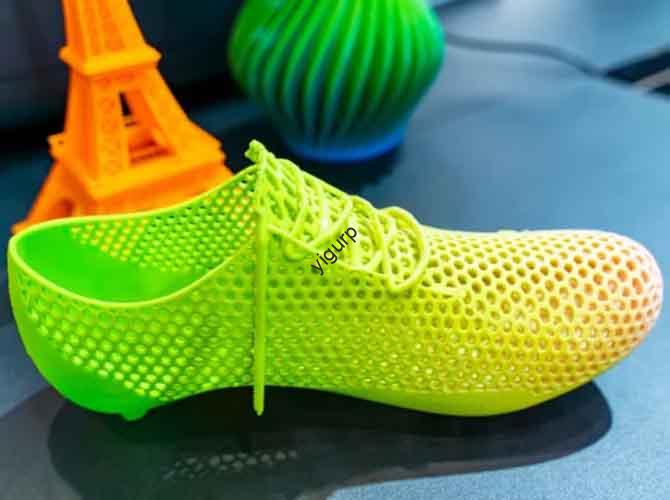In 3D Printing, choosing the right material can make or break a part’s performance. For applications needing strength, durata, e versatilità, 3D Printing PA6 (Poliammide 6) si distingue. This material solves common pain points—like fragile parts, poor wear resistance, or limited use in harsh environments—that plague other 3D printing plastics. Let’s explore its key features, usi del mondo reale, and how to overcome its few challenges.
1. Core Advantages of 3D Printing PA6: Why It Outperforms Other Plastics
3D Printing PA6 shines thanks to a unique mix of mechanical and chemical properties. Unlike basic plastics like PLA or ABS, it meets the demands of industrial applications.
Key Properties of 3D Printing PA6
| Proprietà | Dettagli | Benefit for Users |
| Resistenza meccanica | Alta resistenza alla trazione (60 MPA) + rigidità; buona tenacità (no breakage under 10 J impact) | Gestisce carichi pesanti (PER ESEMPIO., staffe automobilistiche) |
| Resistenza all'usura | Basso coefficiente di attrito (0.3), 50% better than ABS | Ideale per le parti in movimento (cuscinetti, marcia) |
| Stabilità dimensionale | Tasso di restringimento <1.5% after printing; maintains accuracy within ±0.1mm | Meets precision needs (PER ESEMPIO., parti di macchinari) |
| Resistenza all'olio | Resists mineral oils, lubrificanti, and hydraulic fluids | Safe for engine or industrial equipment |
| Stabilità chimica | Withstands weak acids, alcali, and salts (PER ESEMPIO., 5% HCl for 72 ore) | Works in harsh chemical environments |
| Stabilità termica | Punto di fusione (220° C.) + temperatura di deflessione del calore (120° C.) | Retains shape in high-heat settings (PER ESEMPIO., Baie motore) |
Confronto rapido: 3D Printing PA6 vs. Addominali
| Caratteristica | 3D Printing PA6 | 3D Printing ABS |
| Resistenza alla trazione | 60 MPA | 40 MPA |
| Resistenza all'usura | Basso attrito (0.3) | Higher friction (0.45) |
| Resistenza all'olio | Eccellente | Povero (swells in oil) |
2. 3D Printing Processes for PA6: What Works Best?
3D Printing PA6 is compatible with multiple processes, but some are better suited for its properties. The right choice depends on your part’s needs—like speed, precisione, o costo.
Common 3D Printing Processes for PA6
| Processo | Come funziona | Meglio per |
| Modellazione di deposizione fusa (FDM) | Melts PA6 filament and extrudes it layer by layer | Prototipi a basso costo, simple industrial parts (PER ESEMPIO., parentesi) |
| Sintering laser selettivo (SLS) | Uses a laser to sinter PA6 powder into solid parts | Geometrie complesse (PER ESEMPIO., hollow gears), parti ad alta precisione |
Per la punta: Enhancing PA6 with Fillers
Per aumentare le prestazioni, mix 3D Printing PA6 with fillers:
- Fibra di vetro: Adds 30% more strength (Ideale per parti strutturali).
- Fibra di carbonio: Improves rigidity + reduces weight (great for aerospace components).
- Mineral Fillers: Lowers cost while maintaining basic strength (per parti non critiche).
3. Applicazioni del mondo reale: Where 3D Printing PA6 Shines
From cars to factories, 3D Printing PA6 solves industry-specific problems. Let’s look at key use cases.
Industry Applications of 3D Printing PA6
| Industria | Common Parts Made with 3D Printing PA6 | Problema risolve |
| Automobile | Staffe del motore, Alloggiamenti degli ingranaggi, sensor holders | Withstands oil + Temperature elevate; replaces heavy metal parts (taglia il peso del veicolo da 15%) |
| Macchinari | Cuscinetti, rulli di trasporto, componenti della valvola | Resiste a indossare + attrito; lasts 2x longer than ABS parts |
| Elettronica | Cable organizers, heat-resistant casings | Protects components from heat + prodotti chimici |
Caso di studio: Automotive Gear Replacement
A car manufacturer needed a replacement gear for an older model. Traditional manufacturing would take 4 settimane (muffa + produzione). Usando 3D Printing PA6 (FDM with glass fiber), Essi:
- Designed the gear in 2 giorni.
- Stampato 10 prototipi in 12 ore.
- Testato + finalized the part in 3 giorni.
Tempo totale: 1 week—75% faster than traditional methods. The gear also lasted 3x longer than the original plastic version.
4. Overcoming PA6’s Challenge: Assorbimento d'acqua
3D Printing PA6 has one main downside: it absorbs water, which can ruin parts (causes bubbles, deformazione, or weakening). But this is easy to fix with proper preparation.
Passo-passo: Drying PA6 Before Printing
- Check Moisture Level: Use a moisture meter—PA6 should have <0.1% umidità.
- Dry the Material:
- For filament: Use a filament dryer at 80°C for 4–6 hours.
- For powder (SLS): Dry at 60°C for 8–10 hours.
- Conservare correttamente: Keep dried PA6 in an airtight container with desiccant to prevent reabsorption.
What Happens If You Skip Drying?
- Bubbles in the printed part (ruins surface finish).
- 20–30% loss in mechanical strength.
- Deformazione (parts don’t fit together).
La prospettiva della tecnologia Yigu
Alla tecnologia Yigu, vediamo 3D Printing PA6 as a bridge between prototyping and industrial production. Our team has tested it in 50+ client projects—from automotive brackets to machinery parts—and found it cuts production time by 60% contro. metodi tradizionali. We now offer custom 3D Printing PA6 soluzioni (with fillers like carbon fiber) and pre-dried materials to avoid moisture issues. Guardando avanti, we’ll integrate AI to optimize PA6 printing parameters, making it even easier for businesses to adopt.
Domande frequenti
- Q: How long do 3D printed PA6 parts last?
UN: In industrial use (PER ESEMPIO., parti di macchinari), they last 2–5 years—2x longer than ABS parts. With fillers like carbon fiber, lifespan can extend to 7+ anni.
- Q: Is 3D Printing PA6 more expensive than other plastics?
UN: Yes—PA6 filament costs ~\(50/kg (contro. \)20/kg for ABS). Ma risparmia denaro a lungo termine: parts last longer, so you replace them less often.
- Q: Can 3D printed PA6 parts be recycled?
UN: SÌ! Scrap PA6 (Supporti, stampe non riuscite) can be melted down and turned into new filament/powder. This reduces waste by 40% contro. single-use plastics.
